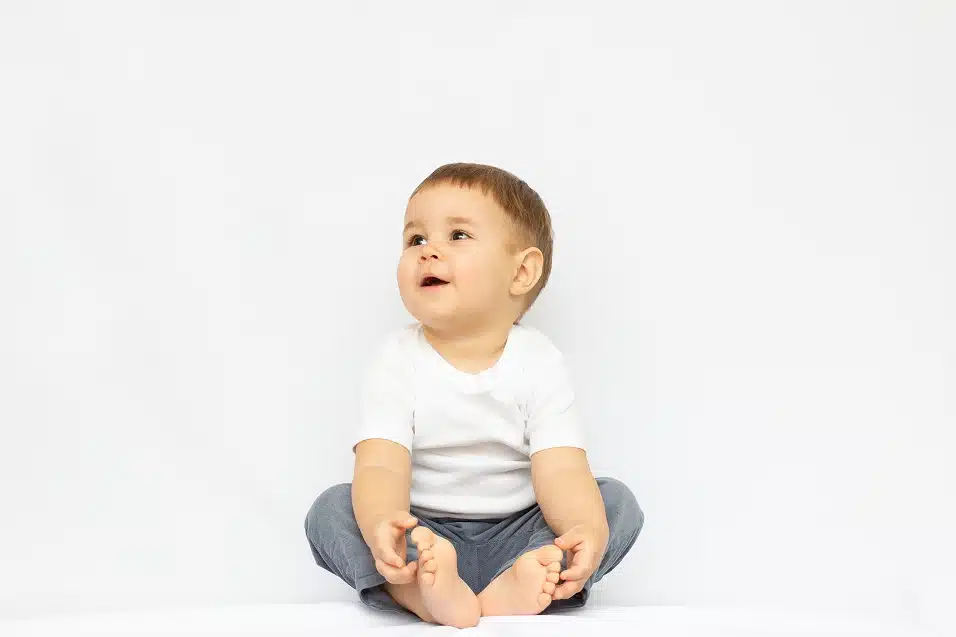By Francesca Resurreccion PT, DPT
Are you curious about when to expect your baby to sit and how to help them sit independently? Let’s talk about it!
Let’s start with the different types of sitting positions.
- Supported sitting—this can be done as early as three months old for short bouts to improve head control. This is where you support your little one at their trunk to help them sit upright. Around 4-5 months, you can place your child in a sitting position with a Boppy pillow supporting them.
- Prop sitting—this can be done at first with your support and then eventually without support. This is a great activity for little ones around 4-6-months old. During early days, this position is easier to accomplish if their hands are supported on an elevated surface such as a box or a cube toy (another option). As our little ones get stronger, you can slowly lower their support surface to the ground until they are propping themselves on the ground independently.
- Independent sitting—This is when our little ones start to play with toys while they’re in a sitting position. This is typically seen around 6 months of age. You will start to see they’re more upright, creating a nice 90-degree angle at their hips.
Something to consider when practicing sitting is, in order to become an independent sitter, we need to have equal strength in our abdominals and our back muscles. If there is an imbalance between the front and back muscles, then that’s when we see our babies either fall backwards or lean their trunk on their thighs.
Floor time is very important to strengthen both the front and back muscles to help our babies get strong enough to become independent sitters. This includes tummy time to strengthen the back (remember the goal is for our babies to tolerate 60 minutes of tummy time by 3-4 months old—this could be broken up to several times per wake window). Playing on their back by bringing their hands to midline to grab toys, bringing their hands to their feet, and rolling. My favorite position to strengthen both front and back muscles is in sidelying. In this position, you can have your baby reach for toys, play with different textures on a crinkle book, or play with suction cup toys (More options, this one’s my go-to) that you stick on a mirror.
If you have any questions regarding the sitting milestone or exercises to assist your baby in achieving this milestone, book a consultation with our physical therapist online or join us for our Tummy Time Adventures Class every 2nd and 4th Tuesday in our clinic at 10am to 11am! Call or email to RSVP, space is limited.




